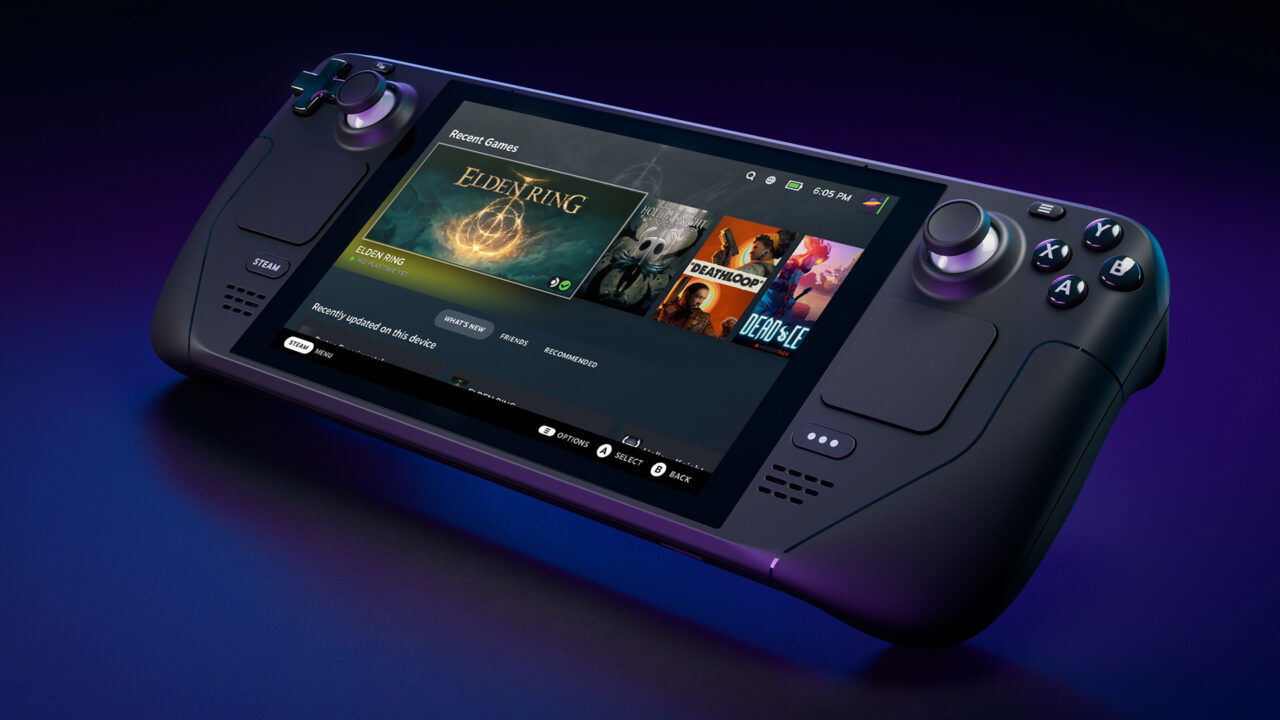When the Steam Deck dropped back in 2022, it turned heads and proved that handheld PC gaming could actually work. It wasn’t just hype. Valve delivered a machine that let you take your Steam library anywhere, and people started paying attention. Fast forward to 2025, and the Steam Deck is still hanging in there. It’s not perfect, and the competition is stronger than ever, but Valve’s little handheld has evolved in ways that keep it relevant.
Steam Deck Today: The OLED Upgrade
In late 2023, Valve gave the Steam Deck a much-needed refresh with the OLED model. The new 7.4-inch screen looks miles better than the original, and the jump to a 90Hz refresh rate makes everything feel smoother. Throw in Wi-Fi 6E and improved battery life, and you’ve got a handheld that finally fixes a lot of the complaints about the first run of the Steam Deck.
And while the hardware still isn’t on par with the newer devices, it’s not just about the hardware. Valve’s SteamOS has grown and now powers more than just Valve’s handheld. Devices like the Lenovo Legion Go S and Asus ROG Ally can run it too, which means Valve’s ecosystem has expanded way past what anyone expected.
SteamOS has also inspired alternatives like Bazzite, which has been replacing Windows on many AMD-powered handhelds.
Competition Is Fierce
When the Steam Deck first launched, its only real competition was the Nintendo Switch and a few clunky Windows handhelds. That’s no longer the case. The Lenovo Legion Go S is running a Ryzen Z1 Extreme with 32GB of RAM, and both the ROG Ally and Ally X continue to receive updates that make them more viable against Valve’s device.
These machines surpass the Deck in raw performance. Then there’s the MSI Claw, which has pulled off an impressive turnaround. Fans have taken notice, especially with the launch of the MSI Claw 8 AI+ that keeps improving with updates, and the new MSI Claw 8, now powered by AMD. And of course, all eyes are on the impending release of the ASUS ROG Xbox Ally and Ally X handhelds.
Even so, the Steam Deck has one big advantage: it’s Valve’s baby. Direct Steam integration, consistent updates, and an army of developers optimizing their games for it mean the Deck still feels like the most “plug and play” option for PC gaming on the go.
What’s Next for the Steam Deck
Valve has already said there won’t be a Steam Deck 2 before 2026, but rumors are heating up. Talking points include a better OLED screen, possibly 900p native resolution, and better refresh support across the board.
Some even say Valve might move away from AMD for its next chip. For now, none of that’s confirmed, but it shows Valve isn’t treating the Deck as a one-off experiment.
What I Think About the Steam Deck
When the Steam Deck was first announced, I pre-ordered one right away. Later, when the OLED version was released, I handed down my original unit to my son and picked up the upgrade for myself. Even with today’s heavy competition, I still think the Steam Deck is one of the best ways to get into handheld PC gaming if you want to see what it’s all about without paying an arm and a leg.
That said, most of my handheld gaming these days happens on my ROG Ally X. With Bazzite installed, it does nearly everything the Steam Deck can do — minus the trackpad — but with more power under the hood. Of course, that extra performance also makes it more expensive.
So, if you’re looking to dive into handheld PC gaming, the Steam Deck remains the go-to choice, and it’s the one I’ll continue to recommend. The Steam Deck is like that first bike you never forget — simple, dependable, and always ready until you’re ready to move on



